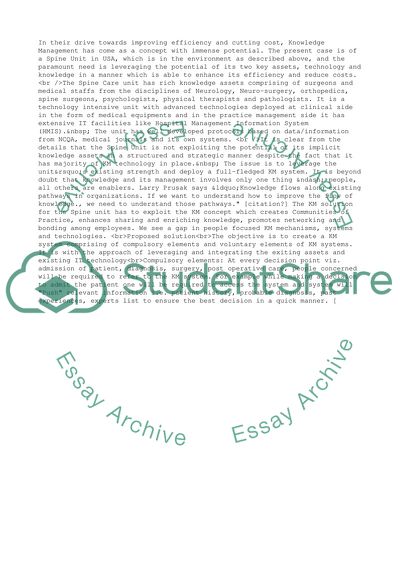Cite this document
(“Implicit Knowledge Assets in Healthcare Essay Example | Topics and Well Written Essays - 1500 words”, n.d.)
Retrieved de https://studentshare.org/management/1510036-knowledge-management-health-care-case
Retrieved de https://studentshare.org/management/1510036-knowledge-management-health-care-case
(Implicit Knowledge Assets in Healthcare Essay Example | Topics and Well Written Essays - 1500 Words)
https://studentshare.org/management/1510036-knowledge-management-health-care-case.
https://studentshare.org/management/1510036-knowledge-management-health-care-case.
“Implicit Knowledge Assets in Healthcare Essay Example | Topics and Well Written Essays - 1500 Words”, n.d. https://studentshare.org/management/1510036-knowledge-management-health-care-case.


